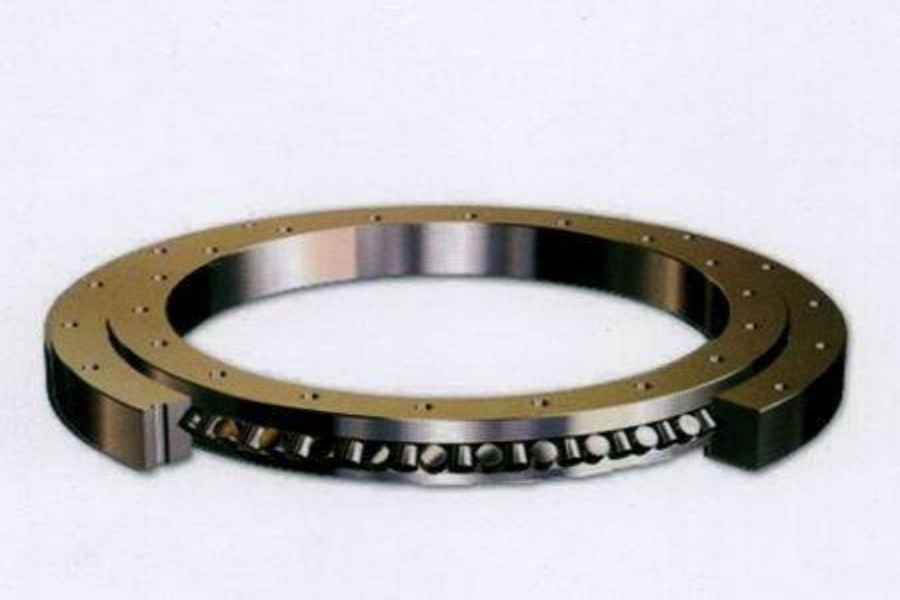
Precision Redefined The Role of Crossed Roller Slewing Bearings in Advanced Machinery
In the realm of high-precision engineering where accuracy and load capacity converge, Crossed Roller Slewing Bearings have established themselves as indispensable components for systems demanding exacting performance. These bearings enable critical operations across industries from semiconductor manufacturing to aerospace, offering a unique combination of rigidity, compactness, and rotational accuracy. This article examines how Crossed Roller Slewing Bearings address the challenges of modern machinery by delivering unmatched precision under substantial loads while optimizing space and reliability.
What Are Crossed Roller Slewing Bearings
Crossed Roller Slewing Bearings are precision-engineered rotational components designed to manage axial, radial, and moment loads simultaneously through an innovative roller arrangement. These bearings feature cylindrical rollers positioned in a crisscross pattern between two concentric rings, creating multiple contact points that distribute stress evenly across the bearing structure. Unlike traditional ball bearings that require separate units for different load types, this configuration integrates all load-handling capabilities into a single compact assembly. The crossed orientation of the rollers provides inherent resistance to tilting forces, making these bearings ideal for applications such as industrial robotics, medical imaging systems, and telescope mounts where minimal deflection and precise movement are critical.
How Crossed Roller Slewing Bearings Function
The operational excellence of Crossed Roller Slewing Bearings becomes apparent in scenarios like a robotic arm assembling microelectronics or a space telescope tracking distant galaxies. The bearing consists of an inner ring and an outer ring with precisely machined raceways that house alternating rows of cylindrical rollers arranged at right angles. As the inner or outer ring rotates, the rollers move along these raceways, maintaining continuous linear contact that minimizes deformation under load. This design ensures that forces are evenly distributed, preventing localized stress concentrations that could compromise accuracy. Preload adjustments during manufacturing eliminate internal clearance, resulting in near-zero backlash—a vital feature for applications like optical alignment systems or coordinate measuring machines where positional repeatability determines success.
Key Features and Advantages
Crossed Roller Slewing Bearings distinguish themselves through their ability to deliver high stiffness and space efficiency without sacrificing performance. The crossed roller configuration inherently resists moment loads, providing up to 40% greater rigidity compared to conventional angular contact bearings. This makes them indispensable in vertical machining centers where cutting tools exert significant side forces during heavy milling operations. Another critical advantage is their compact profile, which allows engineers to design sleeker machinery. For instance, surgical robots utilize these bearings to achieve precise articulation within tight anatomical spaces, while satellite components benefit from reduced weight and volume.
The sealed lubrication systems in many models ensure long-term reliability in challenging environments. Medical-grade variants operate flawlessly in sterile settings, resisting frequent sterilization cycles, while heavy-duty versions used in mining equipment withstand abrasive dust and moisture. Additionally, the modular design simplifies maintenance and replacement, reducing downtime in production lines or critical infrastructure projects.
Applications Across Industries
Crossed Roller Slewing Bearings excel in sectors where precision and durability are non-negotiable:
Semiconductor Manufacturing
In wafer steppers and lithography machines, these bearings enable nanometer-level positioning accuracy during the production of advanced microchips. Their vibration-free operation ensures patterns are etched onto silicon wafers without distortion.
Aerospace and Defense
Satellite antenna systems rely on these bearings to maintain precise orientation during signal transmission, even in extreme orbital conditions. Military radar arrays use them to achieve rapid, jitter-free rotation when tracking high-speed targets.
Medical Technology
CT scanners and MRI machines incorporate crossed roller bearings to rotate heavy gantries smoothly, ensuring high-resolution imaging without motion artifacts that could obscure diagnoses.
Industrial Automation
Robotic welding cells and assembly lines utilize these bearings to position end-effectors with micron-level repeatability, boosting production speed while maintaining quality standards.
Performance Enhancements Achieved
Implementing Crossed Roller Slewing Bearings yields measurable improvements in critical operational metrics:
Sub-Micron Accuracy
Precision-ground components and controlled preloading enable rotational accuracies within 0.001 degrees, essential for laser cutting systems fabricating medical implants or aerospace components.
Enhanced Load Capacity
The linear contact design supports axial loads exceeding 250 kN, allowing tunnel boring machines to rotate cutter heads smoothly under immense geological pressures.
Energy Efficiency
Low-friction roller systems reduce power consumption by up to 30% in solar tracking installations compared to traditional slew drives, optimizing renewable energy output.
Extended Operational Life
Hardened steel rollers and advanced surface treatments enable continuous operation for decades in observatory telescope mounts, requiring minimal maintenance despite daily use.
Common Mistakes to Avoid
Maximizing the benefits of Crossed Roller Slewing Bearings requires attention to detail:
Neglecting Alignment Procedures
Improper mounting surface preparation causes uneven load distribution. Always lap mounting surfaces to within 0.005 mm flatness and use alignment pins during installation.
Using Generic Lubricants
Standard greases degrade under high-speed operation. Specify high-temperature, synthetic lubricants for bearings in industrial furnaces or high-RPM applications.
Ignoring Environmental Seals
In food processing equipment, failing to use FDA-compliant seals risks product contamination during high-pressure washdowns.
Overlooking Thermal Effects
In semiconductor lithography tools, thermal expansion differences between aluminum frames and steel bearings necessitate thermal compensation designs to maintain precision.
Crossed Roller Slewing Bearings supplier
LYRA Drive is a professional slewing bearings ,slew drive and gears manufacturer provides customized slew bearing, drive and gears.For application-specific engineering solutions, contact LYRA to discuss technical specifications and implementation strategies.